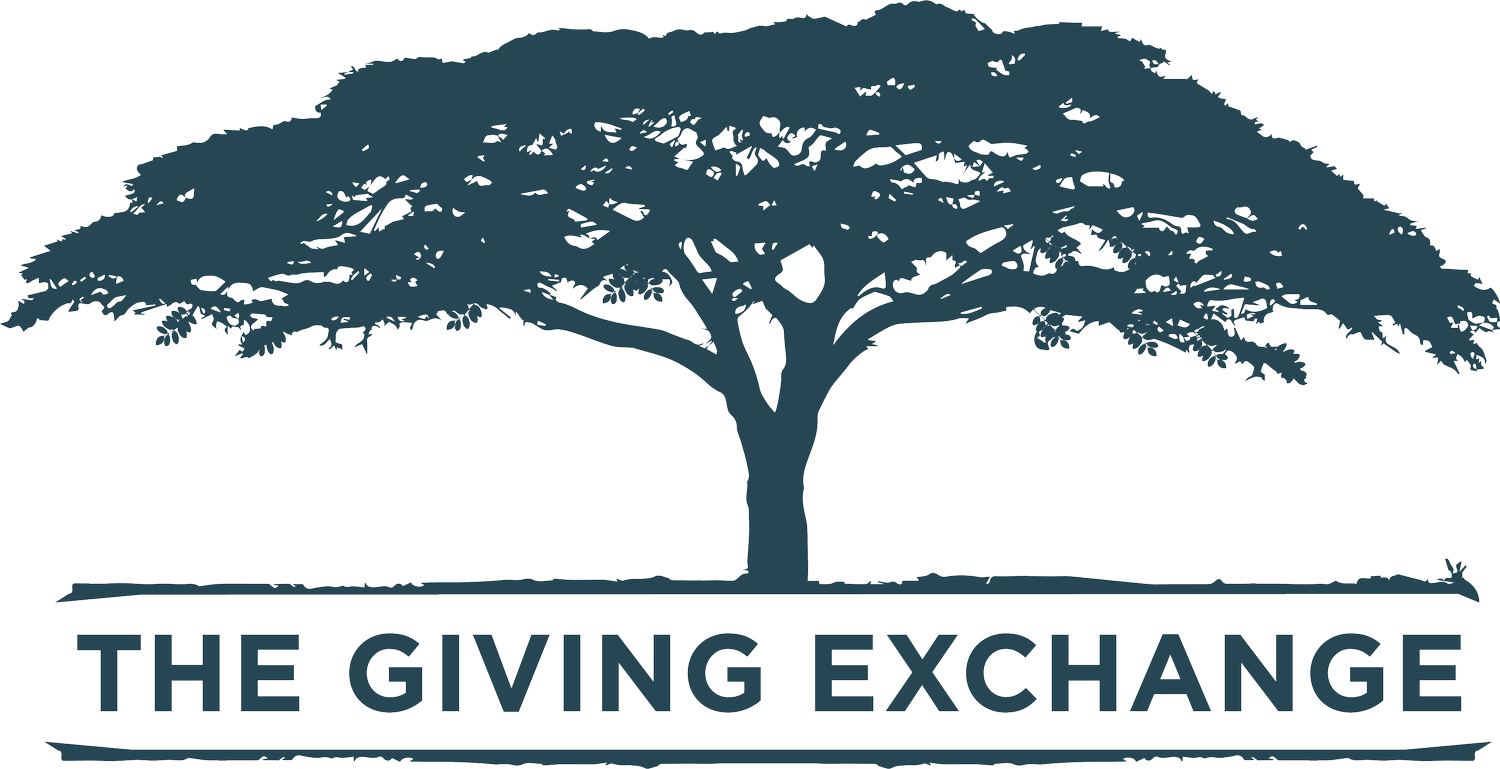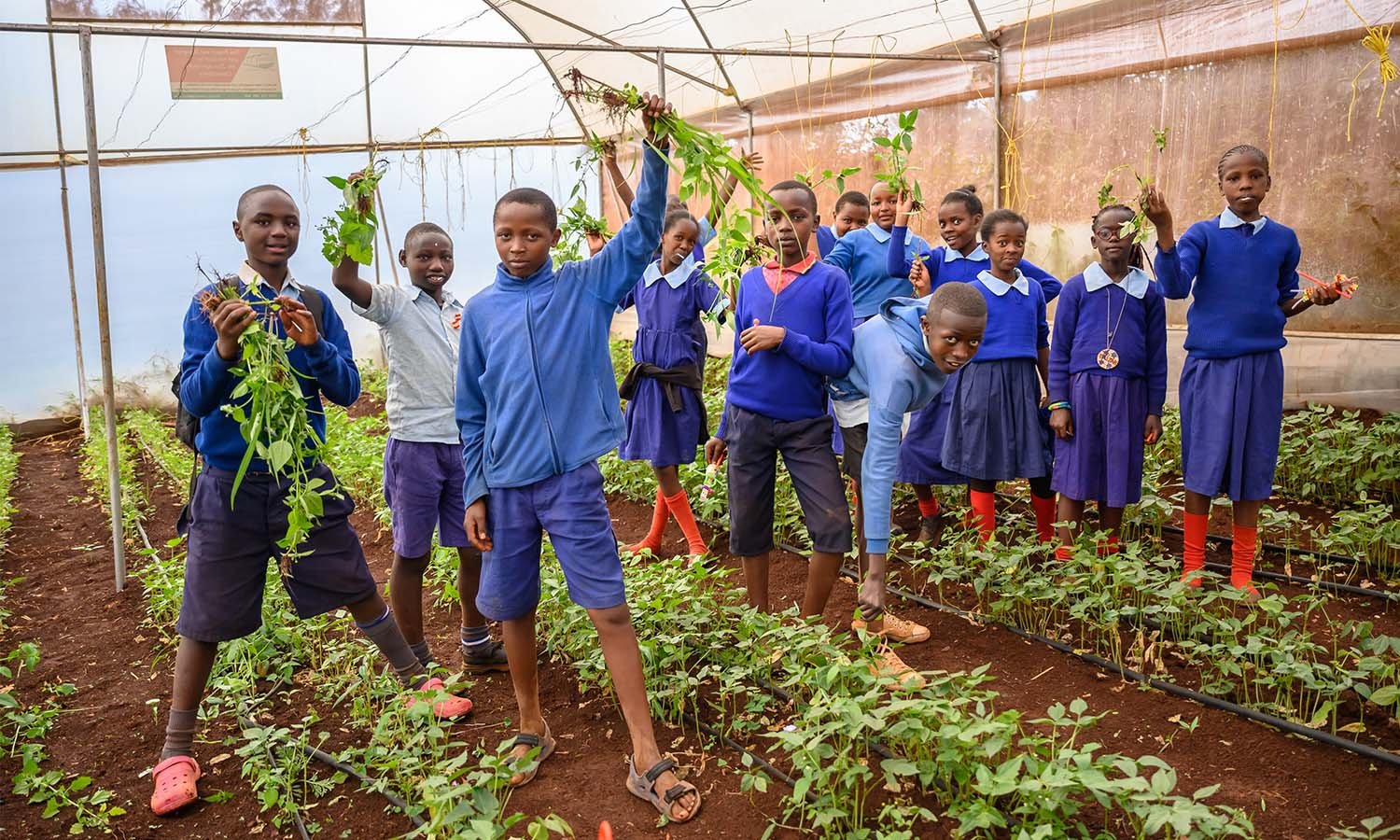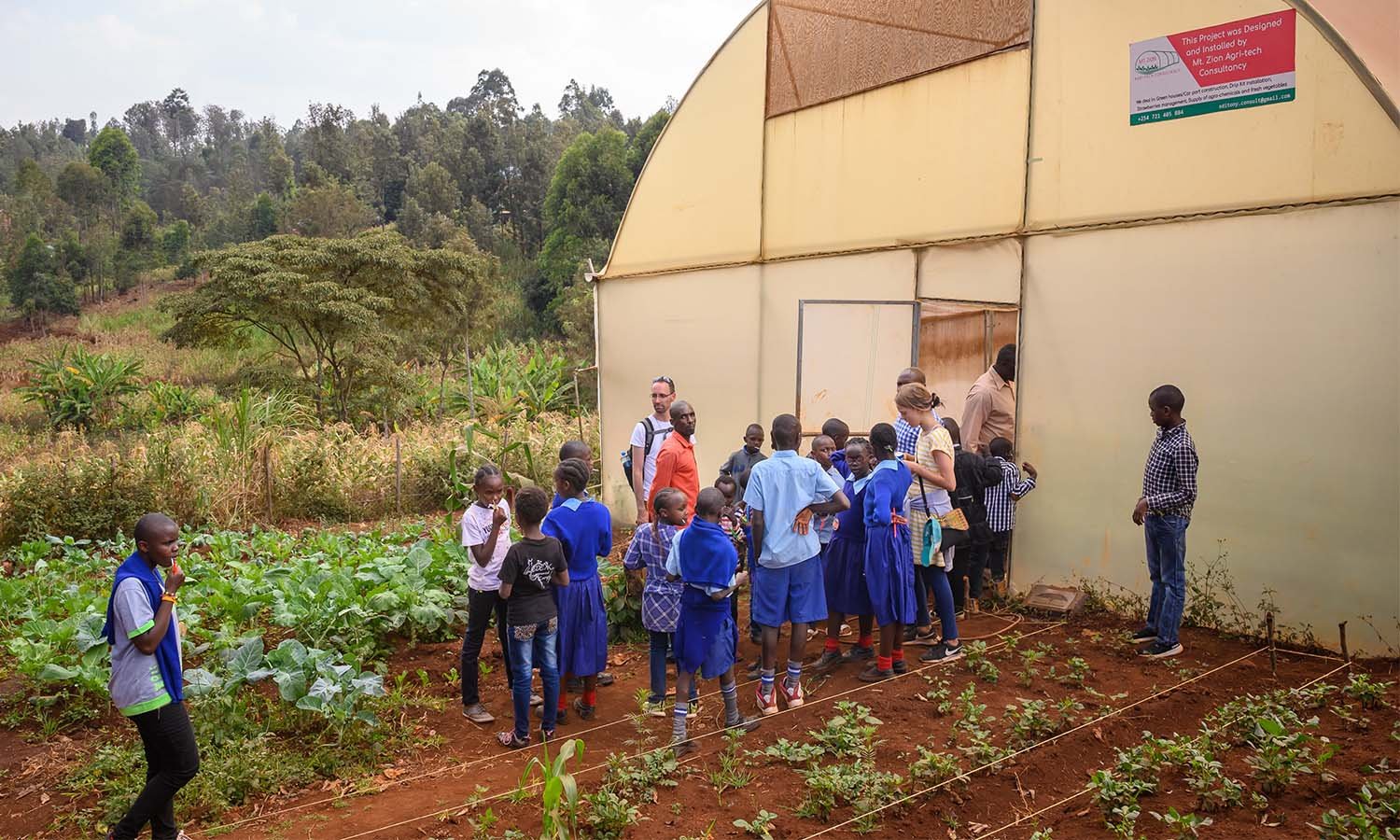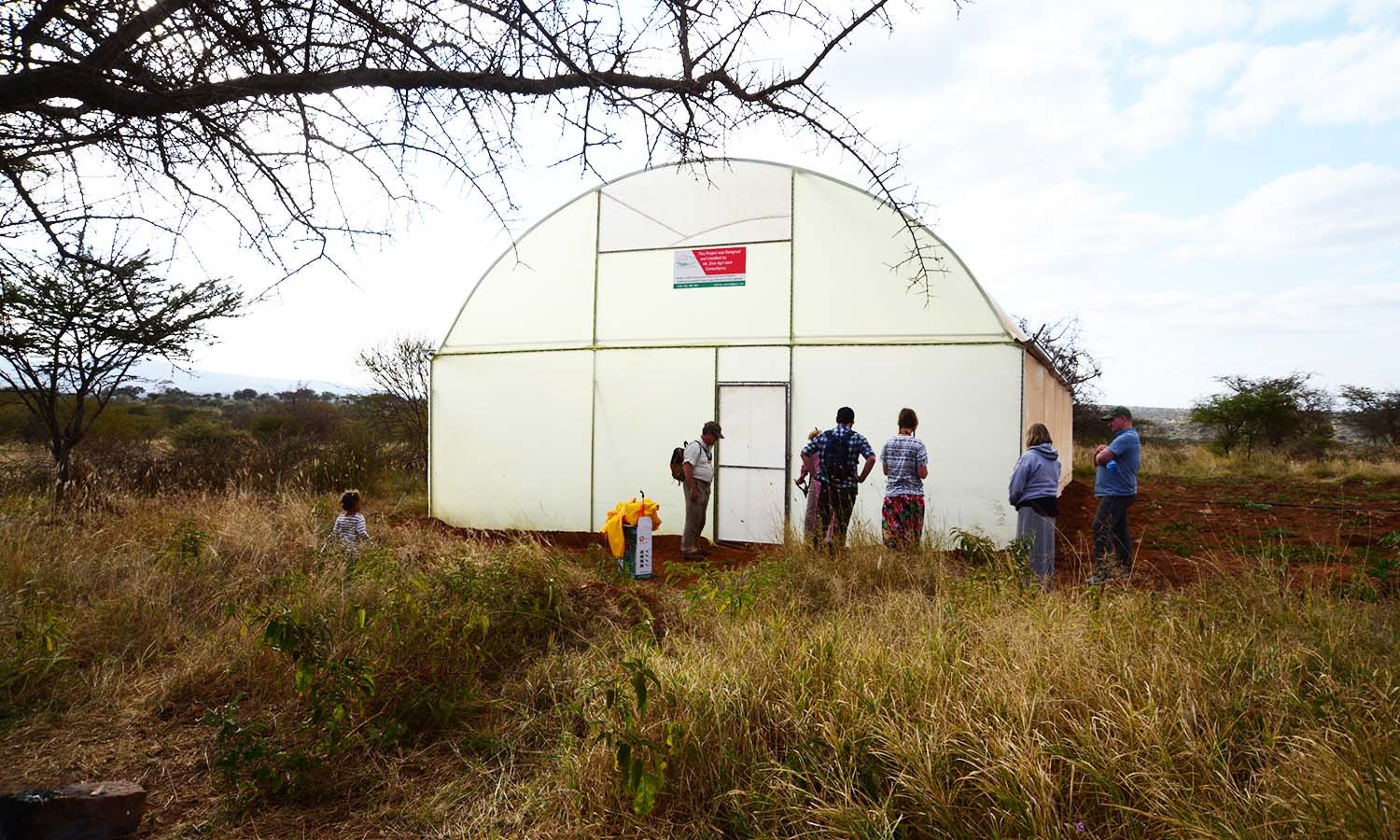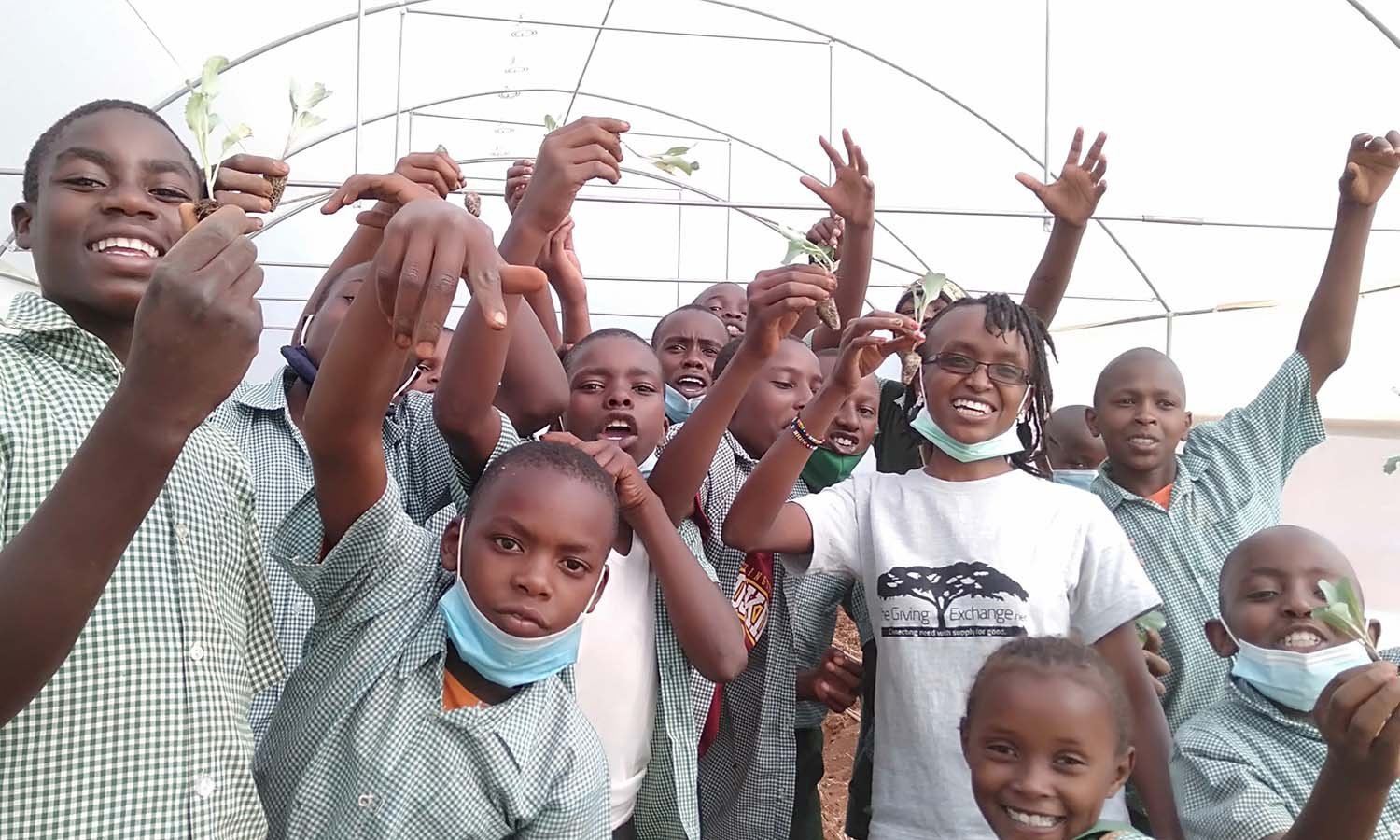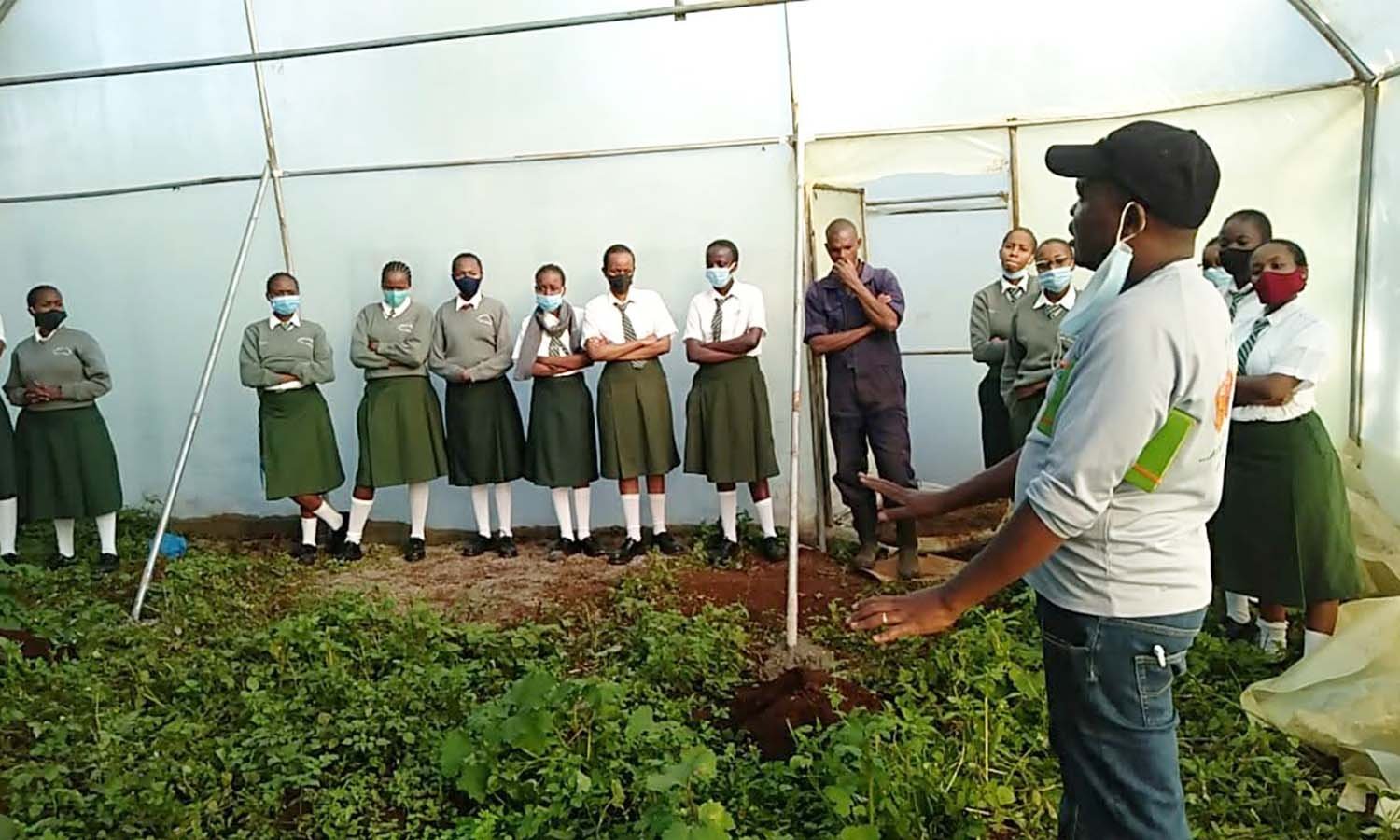A Sustainable Hat Trick: TGE’s Greenhouse Program
Written by TGE Volunteer, Barbara Kohn
You might just call our greenhouse program, the TGE “hat trick.” When it comes to helping communities and people in need around the globe, this highly affordable, successful program in Kenya checks off all three of our goals to:
Improve living conditions
Create sustainable business programs
Promote educational opportunities
Our greenhouse program began in 2014 when we built the first greenhouse at a school for 200 students in the Kajiado Village in Maasai Land. In keeping with our community partnership philosophy, the greenhouse program was implemented following a specific request from the locals themselves.
Through the establishment of this first greenhouse, we were able to support the United Nation’s Sustainable Development Goal (SDG) 2: Zero Hunger. At the same time, we raised funds for local educational programs and future school development through the sale of the greenhouse produce, such as tomatoes, kale and spinach, to the community. Children attending the school also benefitted from access to much-needed fresh vegetables as did the community.
“Another great benefit of the greenhouse program is to improve the nutritional intake and overall health of the children,” emphasized Rod Mickels, TGE founder.
Following that first greenhouse, we have successfully built seven additional greenhouses. In 2018, TGE built, planted and launched three greenhouses in two rural schools, the Gichocho Primary School and Kangoya Primary School, and a Maasai Village girls’ safehouse. In 2020, when all of rural Kenya was facing starvation due to job losses caused by the COVID-19 lockdown, we launched greenhouses at the Kiu River Primary and Saint Anne’s Secondary schools of Kiambu county and the Sikizana Rescue Center. In total, some 3000 children benefit from the food and income generated by these seven greenhouses.
In addition to generating income to support educational efforts and providing much-needed food, the greenhouses have had a positive impact on the students’ attitude toward education. Student performance has improved and truancy has been reduced. Also, many of the students developed a liking for farming. At some of the schools, like the Kangoya Primary School, groups of boys and girls assist with everything involved with the greenhouse and have their own small plots where they have planted kale and spinach.
Of the program, Reanna Placide, TGE Project Manager, says, “Greenhouses are definitely one of our favorite programs to implement. Not only do they provide a solid source of income, as vegetables are always in demand; they also contribute to the health improvement and nutrition of thousands of men, women and children. We also love to get the children directly involved in the success of the project, as all are invited to participate in the sowing process. Several of the older kids get trained in vegetable farming techniques to help run the greenhouse, therefore enriching their education with specific skills training and concrete experience which can open doors for future career opportunities.”
To coin another sports phrase, we like to say that the TGE greenhouse program has “knocked it out of the park” for many of Kenya’s schools and local communities.
Each TGE greenhouses costs $3,600. If you’d like to contribute to the construction of a greenhouse, you can find more information/donate at https://www.thegivingexchange.net/donate.
